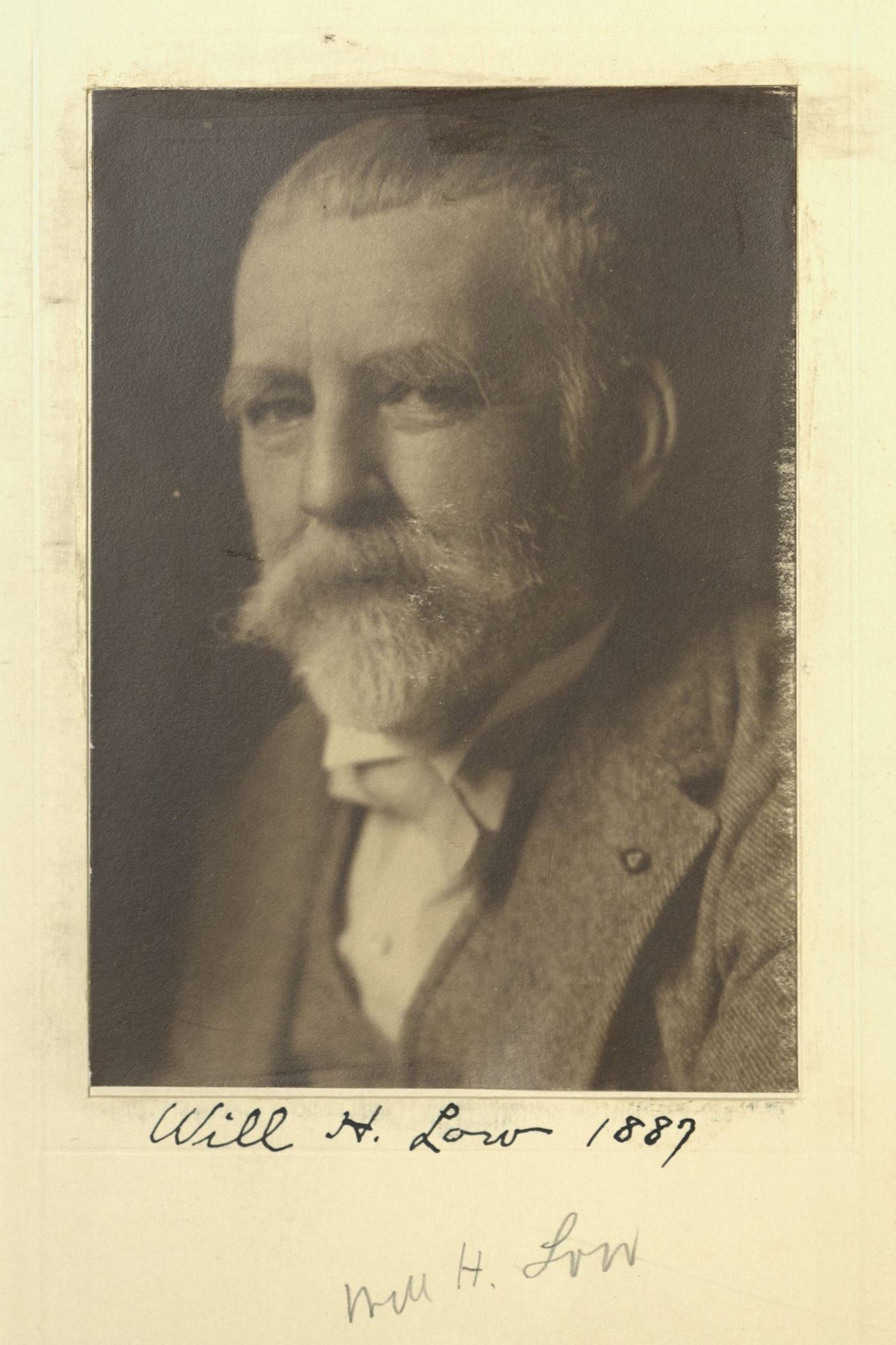Artist
Centurion, 1887–1932
Born 31 May 1853 in Albany, New York
Died 27 November 1933 in Bronxville, New York
Proposed by Richard H. Stoddard and Walter Shirlaw
Elected 2 April 1887 at age thirty-three
Seconder of:
- Herbert Adams
- James Carroll Beckwith
- William Bailey Faxon
- Daniel Chester French
- Robert Herrick
- Charles L. Hinton
- Halsey C. Ives
- August F. Jaccaci
- Frederick Richardson
- Frederick J. Wiley
Supporter of:
Century Memorial
Not many native painters or illustrators have been better known by name to the American public than was Will H. Low, but that was not because of any touch of the spectacular in his personality. His preoccupations, like his friendships, were chiefly in the circle of his art; elsewhere his disposition was of the retiring sort. In most things he was by instinct a conservative. His feeling towards the highly modernistic school of painting was expressed in his habitual description of it as “stirring up the goldfish;” indeed, his dislike of innovation was not limited to art. Only two years ago, when the Century membership was sounded as to individual preferences on changing the week-day on which were set the Club’s monthly meetings, Low wrote back that he possessed no special knowledge concerning the merits of Saturday compared with Thursday, but that he hoped one institution might in these days find it possible to avoid perpetual change. His own artistic career was of that kind. The delicacy, the grace, the color, the sureness of touch which marked his canvases and murals expressed from first to last his adherence to old ideals.
Perhaps the real Will Low was known only to his fellow-painters, to a few chosen intimates outside his craft, or to appreciative readers of his “Chronicle of Friendship.” That delightful book is infused with an atmosphere quite its own. Appraisal of artistic achievement and artistic personality, the narrative of what Low describes as “our rather noisy society at the inn” at Barbizon, is flavored constantly with unexpected humor. Strolling about Paris, years after his own matriculation in the artist colony, and left for a week with time hanging on his hands, “I realized that, for the first time in my fairly long experience, I had seen the side of Paris which the average stranger sees, and somewhat with the tourist’s eyes.” Robert Louis Stevenson, lounging in Will Low’s Paris studio and objecting to a picture for which the pretty model was still sitting, remarks that “I would prefer the original;” the model, curtseying, retorts that “it is a thousand pities another has been before monsieur in his choice.” Even his strong artistic admiration for St. Gaudens does not prevent Low’s equally positive recollection of that sculptor as “one of the most appreciative frequenters of Harrigan & Hart’s,” especially when they performed The Mulligan Guards. Stevenson, visiting Low at New York, expressed the wish to meet some hero of the Civil War. Low brought him, rather timidly, to where General Sherman sat in his New York club, and introduced him. The colloquy began inauspiciously:
“Who is he? One of my boys?”
Low explained that Stevenson was not a war veteran, but a Scotchman and an author.
“What has he written?”
Low, searching for some common ground of recognition, answered, “Dr. Jekyll and Mr. Hyde.” The general did his best:
“He wrote that, did he? First-rate play; I saw Mansfield in it.”
Alexander Dana Noyes
1933 Century Association Yearbook

